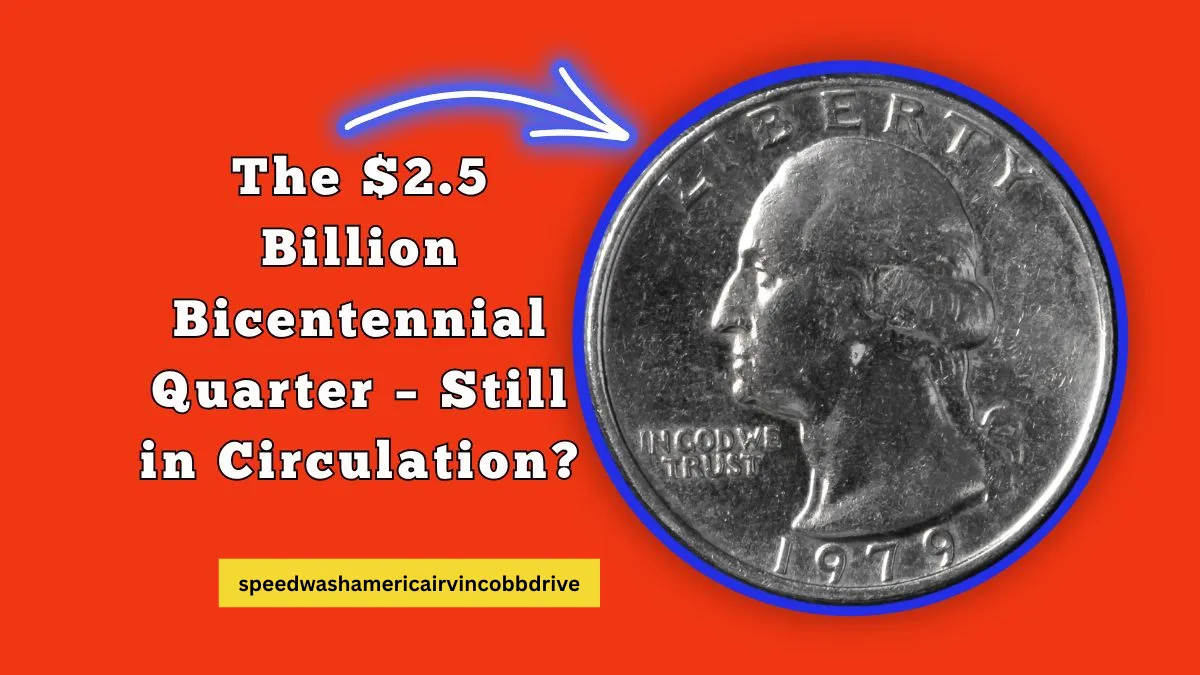The Bicentennial quarter, minted to commemorate America’s 200th birthday in 1976, has long fascinated collectors. While most of these coins are worth just 25 cents, an ultra-rare version is now rumored to be worth an astonishing $2.5 billion—and it might still be hiding in someone’s pocket change today.
Let’s uncover what makes this particular coin so valuable, how to identify it, and why it could still be in circulation.
What Is the Bicentennial Quarter?
Struck by the U.S. Mint in 1975 and 1976, the Bicentennial quarter was created to celebrate 200 years of American independence. Instead of the traditional eagle on the reverse, this coin features a colonial drummer and the dual date “1776–1976.”
The Mint produced hundreds of millions of these quarters for general circulation, which makes most of them common. But a tiny number of rare versions were struck under unique circumstances—and those are worth a fortune.
Why Is This Bicentennial Quarter So Valuable?
While most Bicentennial quarters are plentiful, one particular variety has sparked widespread intrigue due to its extreme rarity, unique metal composition, and prototype status.
Key factors behind the $2.5 billion value:
- Prototype status: Believed to be part of a limited pre-production batch never meant for circulation.
- Metal composition: Rumored to include a unique alloy blend containing gold and silver.
- Ultra-high relief design: Crafted using special dies that produce extreme detail and dimensionality.
- Historical significance: A one-of-a-kind tribute to America’s Bicentennial.
This combination of rarity, historical value, and collector demand fuels the record-shattering price.
Could It Still Be in Circulation?
Yes—and that’s what makes this story so captivating.
Because it resembles common Bicentennial quarters, the ultra-rare prototype may have slipped into circulation unnoticed. Experts believe that a few examples remain unaccounted for, potentially resting in coin jars, piggy banks, or even vending machines across the country.
Every transaction could be a treasure hunt.
Bicentennial Quarter Types and Their Values
Here’s a breakdown of various Bicentennial quarters and what they could be worth:
| Type of Quarter | Description | Estimated Value | Rarity Level |
|---|---|---|---|
| Standard Circulated | Mass-produced for everyday use | $0.25 | Very Common |
| Proof Coin | Shiny, mirror-like finish (usually in sets) | $5 – $20 | Common |
| Double Die Error | Blurred or doubled text/design elements | $1,000 – $50,000 | Rare |
| Silver or Unusual Alloy | Struck in 40% silver or with experimental metals | $100,000 – $500,000 | Very Rare |
| Ultra-Rare Prototype | Unique features, gold-silver blend, high relief | Up to $2.5 Billion | Extremely Rare |
How to Identify a Rare Bicentennial Quarter
If you think you’ve stumbled upon a valuable Bicentennial quarter, check for these signs:
- Check the Date: It should read “1776–1976.”
- Look at the Reverse: Make sure it features the colonial drummer.
- Inspect for Errors: Blurred text or doubled imagery could signal a double die.
- Analyze the Finish: Proof coins have extra luster and fine detail.
- Check the Composition: Silver coins sound different when dropped. A magnet test may help rule out common metals.
- Consult an Expert: For high-value finds, always get the coin graded by a professional numismatist or send it to a third-party grading service like PCGS or NGC.
Why Do People Collect Coins?
Coin collecting—also known as numismatics—has grown in popularity thanks to the thrill of discovery and potential for big financial rewards.
Reasons people love collecting coins:
- History in your hands: Coins tell the story of a nation.
- Artistic craftsmanship: Intricate designs and symbolism make coins beautiful keepsakes.
- Investment potential: Some coins appreciate dramatically in value over time.
- The thrill of the hunt: Rare finds can happen anytime—even in everyday change.
The Bicentennial quarter embodies all of these traits, making it one of the most sought-after coins of the 20th century.
Final Thoughts
The idea of a $2.5 billion Bicentennial quarter may sound like fantasy—but within the world of rare coin collecting, stranger things have happened. Whether fact or folklore, it’s a reminder to pay close attention to the coins in your pocket. That unassuming quarter just might be one of the most valuable coins in American history.
FAQs
Are all Bicentennial quarters valuable?
No. The vast majority are common and only worth face value. Only rare versions—such as those with errors, unique metal content, or prototype status—hold significant value.
How do I know if I have the $2.5 billion quarter?
Look for:
Unusual metal coloring or weight
Mirror-like proof finish
Errors like doubled images
High-relief details
Have it authenticated by a certified grading service to be sure.
Can I still find one in circulation?
Possibly. Some experts believe a few ultra-rare examples remain in everyday use, undiscovered.
